
Sustainability Roadmap for the Energy Industry
The role of energy in the modern word in undisputed.
It is one of the drivers and essential forces for powering economic activity and fueling economic growth. Across industries, energy is needed to power transportation, manufacturing, and other sectors. Access to reliable and affordable energy is a key factor in the upliftment of societies and in tangible economic growth.
The chart at below shows the impact of various activities and industries on greenhouse emissions.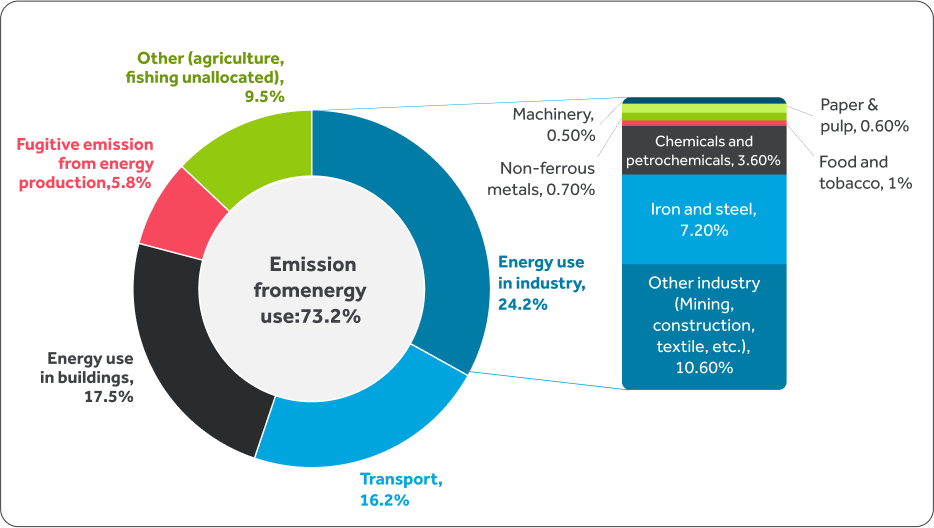
The Greenhouse Gas Protocol is a widely-used global standard for measuring and reporting greenhouse gas emissions. It provides a framework for organizations to identify, quantify, and manage their greenhouse gas emissions across the value chain. The GHG Protocol has three emission scopes:
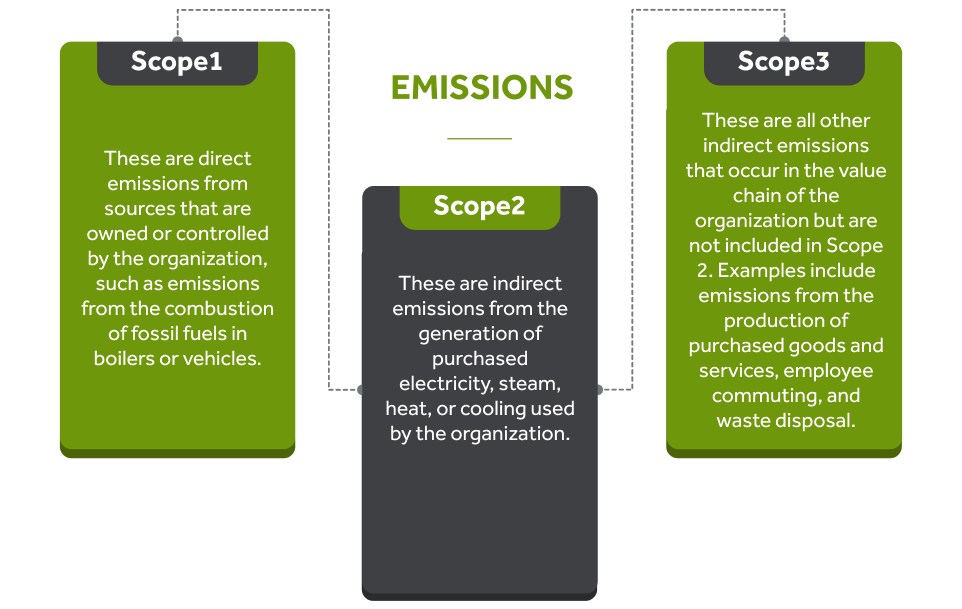
By using the GHG Protocol framework, organizations can identify their main sources of emissions and develop strategies to reduce them across the value chain. Strategies include increasing energy efficiency, switching to renewable energy sources, and implementing sustainable practices in the operations and supply chain. By measuring and reporting on their greenhouse gas emissions, organizations can also be transparent and accountable to stakeholders about their efforts to address climate change.
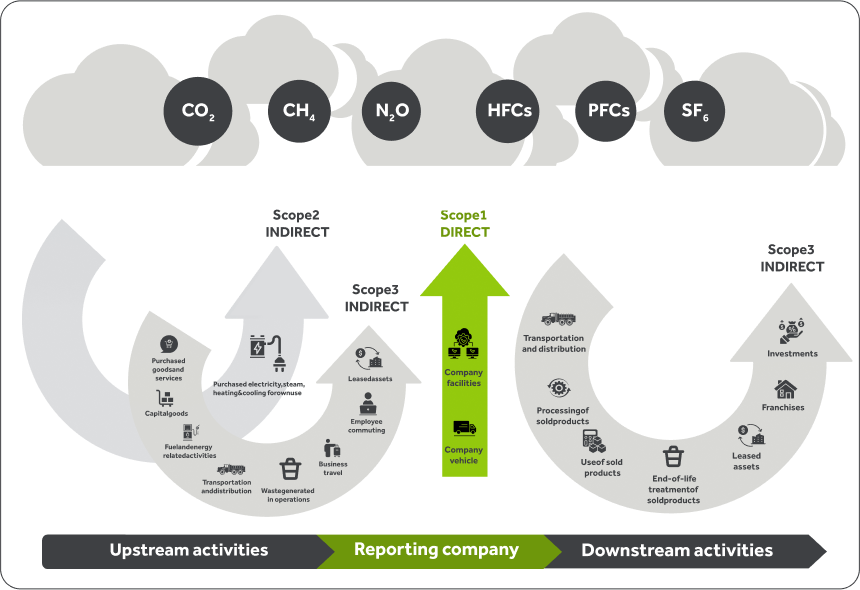
Most organizations today are striving to reach a target that is the pinnacle of sustainability: net zero. Achieving net-zero emissions requires a combination of reducing emissions from all sectors, such as energy, transportation, agriculture, and industry, as well as increasing the use of renewable energy sources and implementing carbon capture and storage technologies.
Additionally, it requires reforestation, afforestation, and changes in land use to sequester more carbon. It is essential to have a comprehensive plan and commitment from governments, businesses, and individuals to take action and make necessary changes toward a sustainable future.
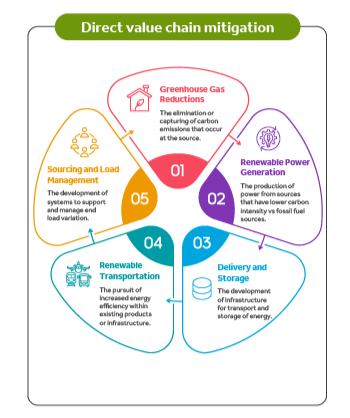
Reaching net -zero emissions of carbon dioxide from the energy industry by 2050 is a significant challenge that requires massive investment in low -carbon technologies and moving away from fossil fuels. This will involve a combination of measures such as increasing the use of renewable energy sources (wind and solar power), improving energy efficiency, and implementing carbon capture and storage technology. Governments and private sector organizations must work together to provide funding and incentives for research and development and to implement regulations and policies that encourage the transition to a low -carbon energy system. Additionally, consumers and businesses must be willing to adopt low -carbon lifestyles and technologies. Achieving net -zero emissions by 2050 will require a comprehensive and collaborative effort from all sectors of society.
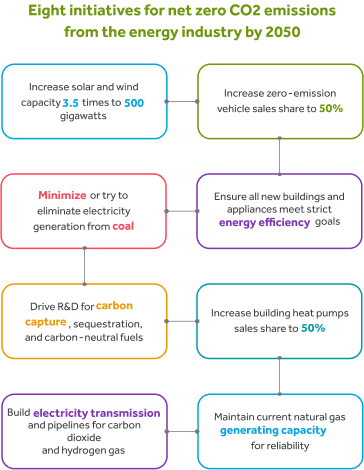
Reducing the carbon footprint has become integralto organizational strategy. The focus has shifted to implementing measures to reduce greenhouse gas emissions. This includes electrification (exploring alternative energy/electricity sources such as wind and solar), improving energy efficiency, implementing sustainable practices in operations, and investing in low-carbon technologies. Organizations are also committing to ambitious science-based targets for reducing emissions to meet the Paris Agreement climate change goals, with sustainability reports providing full disclosure of their participation in carbon offset programs. These efforts toward achieving a zero-carbon economy are driven by a growing concern for the environment, a recognition of the business case for sustainability, and increased regulatory and stakeholder pressure to address climate change.
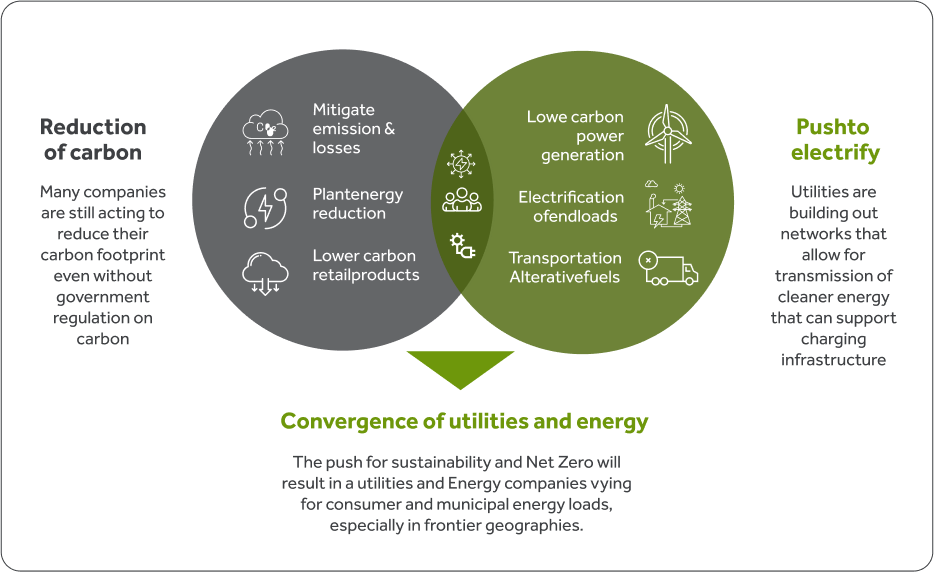
Technology partners and the engineering ecosystem play a huge role in driving the 2050 vision and Sustainable Development Goals (SDGs). Strong headway is being made into the development of clean and renewable energy sources like solar, wind, and hydropower. This not only reduces the need for fossil fuels, which emit large amounts of carbon dioxide and other greenhouse gases but also provides an alternative source of energy that is sustainable and environmentfriendly. Another area where technology is making an impact is energy efficiency. Advancements in energyefficient appliances, buildings, and transportation systems can significantly reduce energy consumption and greenhouse gas emissions. Technology is also helping to improve carbon capture and storage methods, which can capture and store carbon dioxide emissions from power plants and industrial processes, preventing them from entering the atmosphere.
Reducing the carbon footprint has become integralto organizational strategy. The focus has shifted to implementing measures to reduce greenhouse gas emissions. This includes electrification (exploring alternative energy/electricity sources such as wind and solar), improving energy efficiency, implementing sustainable practices in operations, and investing in low-carbon technologies.
Organizations are also committing to ambitious science-based targets for reducing emissions to meet the Paris Agreement climate change goals, with sustainability reports providing full disclosure of their participation in carbon offset programs. These efforts toward achieving a zero-carbon economy are driven by a growing concern for the environment, a recognition of the business case for sustainability, and increased regulatory and stakeholder pressure to address climate change.
Strategy and Innovation
Insights and Data
Digital Manufacturing/IoT
Cloud and Applications
Customer Engagement and Commerce
Product Engineering
Cyient brings three decades of experience and a strong commitment to sustainability. From designing engines for new-generation aircraft to reduce environmental impact to improving their production processes with our systems engineering and manufacturing expertise to helping customers acquire, manage, and leverage geospatial information to garner actionable insights to improve decision-making and outcomes, Cyient brings deep expertise in enabling a sustainable future. With a promise of Designing Tomorrow Together, Cyient helps businesses transform their processes and operations without compromising on efficiency.
Cyient has engaged with organizations in the energy and oil and gas sector for nearly 15 years, helping them leverage technological solutions to solve mission-critical challenges.
Cyient’s commitment to sustainability is exemplified by our efforts to help mining organizations grapple with the management of tailings. To solve the problem, Cyient designed the Cyient Tailings Management System (CTMS) so customers can leverage data to monitor the environmental risk that their tailings dams pose.
Cyient (Estd: 1991, NSE: CYIENT) is a global Digital, Engineering, and Technology solutions company. We collaborate with our customers to design digital enterprises, build intelligent products and platforms, and solve sustainability challenges. We are committed to designing tomorrow together with our stakeholders and being a culturally inclusive, socially responsible, and environmentally sustainable organization.
For more information, please visit www.cyient.com
20+ years industry experience
2300+ industry-dedicated engineers
300+ new products
90+ clients
Smart Healthcare Systems: Cyient Partnerships That Transform Patient Care Services
Please rotate your device!
Cyient (Estd: 1991, NSE: CYIENT)delivers Intelligent Engineering solutions for Digital, Autonomous and Sustainable Future
© Cyient 2024. All Rights Reserved.